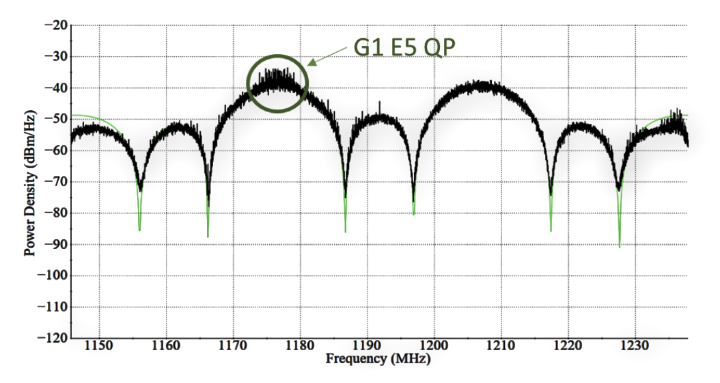
Recently, one of Europe’s Galileo satellites has been reconfigured to emit a new signal component optimized to serve low-end receiver devices and Internet of Things (IoT) applications. One of the Galileo satellites in elliptical orbit – officially known as GSAT0202 – has been reconfigured to transmit this new signal component in the E5 band for test purposes.

According to ESA, the meter-level accuracy provided by Galileo’s Open Service makes it the world’s most accurate generally-available service, out-performing other global navigation systems such as GPS and providing not only positioning, navigation and timing services to users worldwide, but also aiding rescue missions. Yet individual satellites within the constellation can also be used to trial new signals and services as the system continues to progress.
Embedded sensors placed in everything from home appliances to farm equipment to smart city infrastructure are on the way, allowing such items to report and exchange their location information so they can work together. At the same time, these stand-alone sensors are constrained by strict limits on available battery power and computational resources.
To serve this emerging market of IoT and snapshot devices, and to respond to the needs of chipset manufacturers, Galileo engineers looked into requiring a positioning signal that can be acquired with lower computational complexity.
A new test signal component in the E5 band developed by ESA is located along a narrow stretch of the overall Galileo signal, intended to enable streamlined positioning fixes requiring less calculation, without any effect on the E1 and E6 signal bands that Galileo also transmits on. The preliminary receiver test performance has shown that the signal component has the potential to reduce the signal acquisition time by a factor of three compared to current GPS L5 or Galileo E5a signals.
Once the satellite was reconfigured, signal measurements were taken using the high gain antenna installations from the Galileo In-Orbit Test facility of the ESA center in Redu, Belgium and the Signal Monitoring Facility of the German Aerospace Center DLR in Weilhelm, Germany, confirming the stability of the augmented signal.

Then, directly after the test signal component was broadcast, it was successfully acquired and tracked by a set of receivers located at ESA’s Navigation Laboratory, based at its ESTEC technical center in the Netherlands.
The work has been supported by a range of industrial partners including Airbus Defence and Space, Thales Alenia Space Italy, as well as by EUSPA (EU Agency for the Space Program) – overseeing the provision of Galileo services – the European Commission, the Galileo program manager – and Spaceopal, operating Galileo.

Following detailed testing to show the value of the ‘G1 E5 Quasi Pilot’ signal component, in the next step the other elliptical Galileo satellite GSAT0201 will be similarly reconfigured, while selected chipset manufacturers will be involved in testing under the supervision of EUSPA. The test results will be evaluated at the Galileo Program level in order to evaluate introducing this new signal component in the constellation.
“Until now no other Global Navigation Satellite System has provided such capability in the E5 frequency band, but the emerging market perspective for such a feature is clear,” said Jörg Hahn, heading ESA’s Galileo First Generation System Engineering Service. “With satellite reconfiguration it would be possible to deploy such a new capability to the full constellation within a relatively short time, directly responding to current user demand.”
“The successful start of this test campaign is the result of intensive design and test activities,” said Stefan Wallner, head of ESA’s Galileo First Generation Signal in Space Engineering Unit. “Thanks to the great engineers supporting Galileo within ESA and on the industrial side, it was possible to introduce this new test signal aboard a satellite that was not initially designed to host such capability. Now we’ve tested this new signal component in the lab context, next we’re eager to see how it performs in a real environment.”

